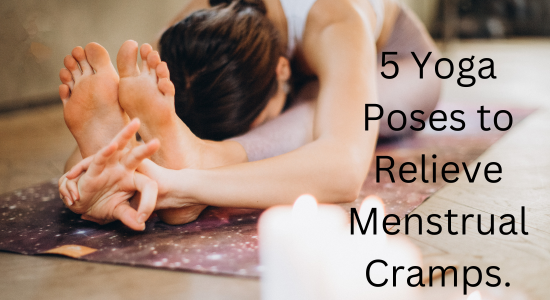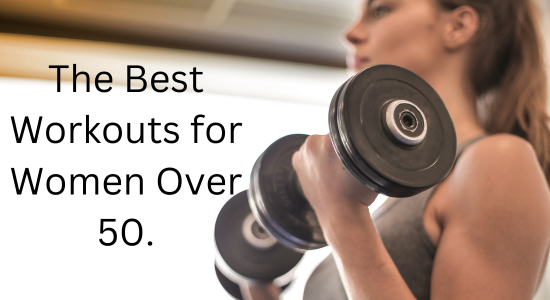Learn how exercise supports hormonal balance in women by regulating estrogen, cortisol, and insulin. Discover the best workouts and healthy fitness tips for women.
Hormonal balance plays a vital role in every aspect of a woman’s health — from mood and energy levels to metabolism, sleep, and reproductive wellness. Unfortunately, many women experience hormonal fluctuations due to stress, poor diet, lack of physical activity, or aging. These imbalances can contribute to weight gain, fatigue, irregular menstrual cycles, and even mood disorders.
Exercise is one of the most natural and effective ways to restore hormonal balance. When done correctly, it helps regulate stress hormones, improve insulin sensitivity, and support the healthy production of estrogen and progesterone. This article explores how exercise supports hormonal balance in women and provides practical tips to help you design a fitness routine that aligns with your body’s needs.
How Exercise Influences Hormones
Physical activity triggers a complex response in the endocrine system — the body’s network of glands that produce hormones. Regular exercise can:
-
Regulate cortisol levels: Moderate exercise helps control cortisol, the stress hormone, preventing it from remaining elevated and causing fatigue or weight gain.
-
Boost endorphins and serotonin: These “feel-good” chemicals improve mood and reduce anxiety, supporting mental and hormonal stability.
-
Balance insulin sensitivity: Exercise helps muscles absorb glucose efficiently, which prevents insulin spikes — a major contributor to hormonal imbalance.
-
Support reproductive hormones: Consistent activity can help maintain estrogen and progesterone balance, reducing PMS symptoms and promoting fertility.
According to research published in the Journal of Clinical Endocrinology & Metabolism, women who exercise regularly experience better hormonal profiles than sedentary individuals, especially regarding insulin and cortisol balance.
Key Hormones Affected by Exercise
Understanding which hormones are influenced by exercise can help tailor your fitness routine effectively.
-
Estrogen and Progesterone
Regular workouts help regulate estrogen levels, reducing the risk of estrogen dominance — a condition linked to bloating, mood swings, and menstrual irregularities. Exercise also supports progesterone production, which is essential for healthy menstrual cycles and fertility. -
Insulin
Exercise increases insulin sensitivity, allowing the body to process sugars more efficiently and prevent conditions like polycystic ovary syndrome (PCOS) and type 2 diabetes. -
Cortisol
High-intensity workouts can temporarily increase cortisol, but over time, consistent moderate exercise helps the body manage stress more effectively and lowers resting cortisol levels. -
Thyroid Hormones
Movement stimulates metabolism and supports the thyroid gland, which regulates energy, body temperature, and overall hormonal health. -
Endorphins
Exercise-induced endorphins elevate mood and decrease symptoms of depression, which are often linked to hormonal imbalance.
Best Exercises for Hormonal Balance
Not all workouts have the same effect on hormones. The key is balance — combining intensity with recovery.
-
Strength Training
Resistance workouts help increase growth hormone and testosterone (in small but beneficial amounts), improving muscle tone, metabolism, and energy. This is especially important for women approaching menopause, as muscle mass naturally declines with age. -
Yoga and Pilates
These low-impact exercises reduce cortisol and enhance parasympathetic nervous system activity, promoting calmness and emotional balance. -
Moderate Cardio (e.g., Brisk Walking, Cycling, Swimming)
Improves insulin sensitivity and cardiovascular health without overstressing the body. -
HIIT (High-Intensity Interval Training)
Boosts metabolism and growth hormone levels but should be done moderately (2–3 times a week) to avoid cortisol overload. -
Stretching and Restorative Exercises
Activities like tai chi or slow stretching sessions improve circulation, reduce tension, and support hormone recovery cycles.
Exercise Mistakes That Can Disrupt Hormones
While exercise is beneficial, overtraining or doing the wrong type can cause hormonal imbalance.
-
Excessive high-intensity workouts can raise cortisol and deplete progesterone, leading to fatigue, irregular cycles, and poor sleep.
-
Skipping recovery days prevents the body from repairing itself and maintaining stable hormone levels.
-
Under-eating while exercising intensely can cause hypothalamic amenorrhea — a condition where menstrual cycles stop due to stress and calorie deficiency.
-
Ignoring stress management undermines the hormonal benefits of exercise, even with a consistent fitness routine.
Listening to your body, fueling adequately, and ensuring rest days are just as important as the workouts themselves.
Prevention and Long-Term Balance Tips
Maintaining hormonal balance through exercise is not about perfection but consistency.
-
Follow a balanced routine: Combine strength, cardio, and restorative exercises throughout the week.
-
Prioritize recovery: Include stretching, deep breathing, and at least one rest day.
-
Eat nutrient-rich foods: Lean proteins, omega-3s, whole grains, and leafy greens support hormone production.
-
Get enough sleep: Aim for 7–9 hours per night; poor sleep disrupts cortisol and estrogen balance.
-
Track your cycle: Adjust your workouts based on your menstrual phases — lighter exercises during menstruation, strength training during the follicular phase, and low-impact movement during PMS days.
FAQ: Exercise and Hormonal Balance in Women
Q1: Can too much exercise cause hormonal imbalance?
Yes. Overtraining can increase cortisol and decrease estrogen and progesterone, leading to irregular periods and fatigue.
Q2: Which exercise is best for balancing female hormones?
Yoga, strength training, and moderate cardio are the most effective combinations for regulating stress and reproductive hormones.
Q3: Does exercise help with menopause symptoms?
Absolutely. Strength and aerobic training can reduce hot flashes, improve mood, and maintain bone health.
Q4: How long does it take for exercise to affect hormones?
Noticeable improvements in mood and energy can occur within a few weeks, while deeper hormonal regulation may take 2–3 months of consistent activity.
Q5: Is yoga better than cardio for hormonal balance?
They serve different roles — yoga reduces cortisol, while cardio improves insulin sensitivity. A mix of both provides optimal hormonal health.
Conclusion
Exercise is not just about building strength or endurance — it’s a powerful tool for restoring and maintaining hormonal balance in women. By choosing the right mix of workouts, allowing time for recovery, and supporting your body with proper nutrition, you can naturally regulate hormones, enhance energy, and promote long-term wellness. The goal is consistency, not intensity — a balanced approach to fitness creates a balanced body and mind.

